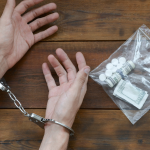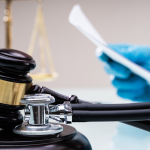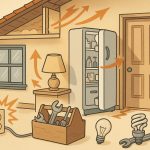When medical devices don’t work as they should, the results can be life-changing. From faulty hip implants to defective heart devices, patients trust these products with their health, and sometimes, their lives. But when something goes wrong, it can be overwhelming to know where to turn.
That’s where a product liability attorney steps in. These legal professionals fight to hold manufacturers accountable, ensure victims get the compensation they deserve, and help prevent future harm. The need is clear: according to the U.S. Food and Drug Administration (FDA), over 100,000 medical device-related injury reports are filed each year.
With the right attorney, victims can navigate the complex legal system and focus on recovery, not red tape.
Defective Medical Devices: What You’re Really Up Against
Every year brings thousands of medical device injury reports, each one representing someone’s shattered expectations. Understanding what makes these cases so challenging starts with grasping how the system works, and where it fails you.
Victims often face powerful manufacturers armed with deep resources and aggressive legal teams, making it difficult to prove fault without skilled representation. This is why the jurisdiction you file in can make a significant difference in the outcome of your claim.
Texas offers particularly favorable terrain for product liability battles. The state’s legal framework genuinely supports victims seeking justice against negligent corporations. When you’re dealing with defective medical devices, securing a Product Liability Attorney in Texas gives you a substantial advantage. These attorneys know how to leverage Texas-specific statutes and precedents that could make or break your case.
How the FDA Classifies Medical Devices
Think of FDA device classifications like risk levels on a ski slope. Class I devices? These are your bunny hill items, bandages, tongue depressors, basic stuff that won’t kill you if something goes wrong. Class II devices bump up the stakes. We’re talking powered wheelchairs, surgical drapes, things requiring moderate oversight.
But Class III devices? That’s double black diamond territory. Pacemakers keeping your heart beating. Artificial hearts replacing the real thing. These carry life-or-death implications.
Here’s where things get interesting: Defective medical devices can emerge from any category, though Class III typically spawns the nastiest lawsuits. The 510(k) clearance pathway lets many devices skip extensive clinical trials, essentially rubber-stamping approval based on similarity to existing products. When problems surface later, that shortcut becomes a legal liability goldmine.
Three Ways Medical Devices Fail You
Device failures typically follow three patterns. Design defects mean the product was dangerous from conception, even perfect manufacturing couldn’t make it safe. Manufacturing defects occur during production, creating devices that don’t match safety specifications. Warning failures happen when manufacturers provide inadequate instructions or omit critical safety information that could’ve prevented your injury.
Current Medical Device Litigation Landscape
The courtroom battles over defective medical devices are intensifying. As of March 2025, over 1,100 lawsuits against Bard PowerPort devices are centralized in the Arizona federal MDL 3081, presided.
Parallel legal action is underway in New Jersey, where state courts have organized a multicounty litigation (MCL) track. Though the exact numbers aren’t publicly disclosed, estimates suggest hundreds of cases are pending there
Furthermore, the pace of filings shows no signs of slowing. A more recent update from June 2025 indicates the MDL has swelled to over 1,400 active cases, with bellwether trials now scheduled, signifying a critical turning point in how these cases will shape future outcomes.
Why You Need Specialized Legal Firepower
FDA classifications, evolving technologies, technical defect proof requirements, facing this maze without proper legal guidance is like performing surgery blindfolded. You need someone who lives and breathes this stuff.
Deep Expertise in Medical Device Litigation
A seasoned product liability attorney doesn’t just understand FDA regulations, they know the approval processes inside and out. They coordinate with biomedical engineers and medical experts who can build bulletproof cases.
Consider this staggering fact: between 2004 and 2021, more than 14,000 issues and incidents were reported specifically in connection with the use of TIVADs (Totally Implantable Venous Access Devices).
These attorneys also navigate multidistrict litigation procedures when similar cases get consolidated. They understand manufacturer internal communications and testing protocols, often uncovering smoking-gun evidence of negligence.
Thorough Investigation and Evidence Gathering
Medical record analysis demands careful coordination with expert medical witnesses. Device retrieval and forensic analysis establish defect timelines. Corporate document discovery frequently exposes FDA communications revealing manufacturer knowledge of problems.
Ongoing medical monitoring ensures your future care planning addresses long-term consequences. These investigations stretch for months, but they’re absolutely essential when battling well-funded corporate defendants who’d rather spend millions on defense than admit fault.
Strategic Litigation for Maximum Results
Your attorney evaluates whether individual lawsuits or mass tort participation offers better outcomes. Settlement negotiations must factor in manufacturer resources and available insurance coverage. Trial preparation requires presenting complex medical testimony that juries actually understand.
Coordinating with regulatory investigations and potential criminal proceedings can strengthen your civil case significantly. This multi-pronged approach consistently yields better results than pursuing compensation alone.
The Legal Process: What to Expect
Understanding attorney expertise is one thing. But you also need realistic expectations about the litigation journey ahead and how long it’ll take.
Initial Evaluation and Time Limits
Discovery rules apply when injuries don’t surface immediately after device implantation. State filing deadlines vary, but most medical device claims require filing within two years of discovering your injury. Evidence preservation starts immediately after recognizing the problem.
Early assessment examines case viability and potential damages before investing serious resources. This evaluation determines whether pursuing litigation makes financial sense for your situation.
Before Filing: Investigation and Demands
Medical expert evaluation establishes the connection between device defects and your injuries. Manufacturer notification and preservation letters ensure crucial evidence doesn’t disappear. Insurance coverage investigation reveals available compensation sources.
Alternative dispute resolution sometimes resolves cases faster than traditional litigation. However, manufacturers typically prefer fighting, especially when facing multiple similar claims that could set expensive precedents.
Formal Litigation Phases
Complaint filing requires identifying all potentially liable defendants, manufacturers, distributors, healthcare providers. Discovery involves depositions and extensive document production from corporate defendants. Expert witness preparation and Daubert motion practice determine which testimony reaches jury ears.
Settlement conferences happen throughout litigation, though meaningful movement often occurs near trial dates. Trial preparation timelines can stretch 18-24 months from initial filing.
Your Compensation: What’s Realistically Possible
Understanding litigation timelines matters, but ultimately you want to know what compensation for defective products you can actually expect for your injuries and losses.
Economic Damages Breakdown
Past medical expenses encompass all treatment costs related to device failure. Future medical calculations require life care planning experts projecting ongoing needs. Lost wage analysis examines both past income loss and future earning capacity reduction.
Revision surgery costs frequently exceed original device implantation expenses. Ongoing monitoring expenses continue throughout your lifetime, particularly with implantable devices requiring regular surveillance.
Non-Economic Damages and Pain Valuation
Physical pain documentation helps juries grasp daily suffering levels. Emotional distress proof often requires psychological evaluation and testimony. Loss of consortium claims address family relationship impacts extending beyond you as the primary victim.
Quality of life deterioration assessment compares pre-injury and post-injury capabilities. These evaluations demand careful documentation and expert testimony to establish fair compensation amounts.
Punitive Damages and Corporate Punishment
Punitive damage standards require proving manufacturer misconduct beyond simple negligence. Corporate misconduct evidence often emerges through internal communications showing knowledge of dangers. Recent jury trends show increasing willingness to punish manufacturers with substantial awards.
Regulatory violation impact strengthens punitive claims when manufacturers ignore FDA warnings or requirements. These awards serve both compensation and deterrent functions in product liability law.
Selecting the Right Legal Team
Understanding full compensation potential highlights why choosing proper legal representation for injuries is critical, not every attorney possesses the experience or resources to maximize these complex damage calculations.
Attorney Experience Evaluation
Specific medical device litigation experience separates qualified attorneys from general personal injury lawyers. Past settlement and verdict results in similar cases provide insight into capabilities. Professional recognition and peer ratings offer third-party validation of skills.
Client testimonials and case studies demonstrate real-world results. Don’t hesitate asking potential attorneys about their specific experience with your device type.
Firm Resources and Support
In-house medical experts and consulting relationships provide crucial case support. Litigation funding capabilities enable expensive expert testimony and testing. Technology resources for case management help organize complex medical evidence.
National networks facilitate multijurisdictional cases when defendants operate across state lines. These resources often determine whether smaller firms can compete with corporate defense teams.
Fee Structures and Financial Terms
Contingency arrangements eliminate upfront costs for most clients. Cost advancement covers expert fees and litigation expenses during case development. Fee sharing in MDL participation can reduce individual costs while maintaining quality representation.
Payment timing and settlement distribution should be clearly explained before engagement. Understanding these arrangements prevents unpleasant surprises during case resolution.
Frequently Asked Questions
- Who can be held responsible for defective products under the product liability Act?
Manufacturers, distributors, and retailers face accountability under product liability law for defective goods causing harm. Liability may stem from strict liability, negligence, or warranty breach. - How does an attorney prove a product was defective?
They conduct thorough defective product investigations, gathering critical evidence including purchase receipts, maintenance records, expert testimonials, and medical reports for building strong cases. They also identify and document how product defects directly caused your injuries or losses. - Can I still file a lawsuit if I signed a consent form?
Absolutely. Informed consent forms don’t eliminate your rights to sue for defective products. These forms address known risks, not manufacturer negligence or hidden defects that weren’t disclosed.
Lynn Martelli is an editor at Readability. She received her MFA in Creative Writing from Antioch University and has worked as an editor for over 10 years. Lynn has edited a wide variety of books, including fiction, non-fiction, memoirs, and more. In her free time, Lynn enjoys reading, writing, and spending time with her family and friends.















